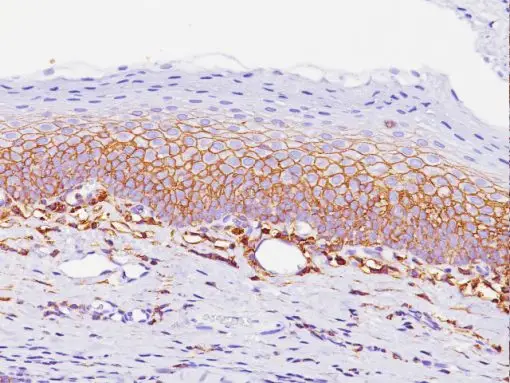Description
CD11c, sometimes referred to as Leu-M5 or Integrin alpha X, is a constituent of the
leukointegrin family. CD11c is a cell surface adhesion receptor mostly expressed in
tissue macrophages, dendritic cells, monocytes, natural killer cells, and granulocytes.
CD11c has demonstrated both sensitivity and specificity for hairy cell leukemia (HCL).
CD11c serves as a distinguishing marker for hairy cell leukemia in comparison to other
small B-cell lymphomas. Vardiman et al. demonstrated that in cases of hairy cell
leukemia (HCL) identified through bone marrow biopsy, nearly all leukemic cells
exhibited positivity for CD11c. In a separate research, all instances of hairy cell
leukemia exhibited positivity for CD11c and negativity for CD5. A panel comprising
CD103, CD11c, CD25, CD5, CD10, and CD23 has been effective in the conclusive
diagnosis of hairy cell leukemia. Monocytes in chronic myelomonocytic leukemia have a
subset with underexpression of CD11c, perhaps facilitating the detection of the
condition. A panel utilizing CD20 and/or DBA.44 alongside either
TRAP,CD11c,orAnnexinA1enhancesspecificityintheassessmentofnormal lymphocytes
from hairy cell populations.
Dendritic cells are crucial to immunological surveillance. CD11c identifies dendritic cells
and was assessed in relation to high-grade cervical intraepithelial neoplasia and
prognosis. Specimens exhibiting elevated levels of CD4+ T-cells, CD11c+ dendritic
cells, and T-bet+ transcription factors demonstrated a robust connection with good
clinical outcomes. A distinct investigation revealed a marked reduction of CD11c
positive dendritic cells and a significant increase in macrophages within the skin of
immunosuppressed renal transplant recipients, potentially correlating with an elevated
risk of squamous cell carcinoma in these individuals.






